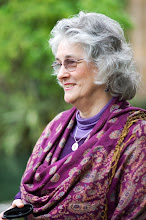In the midst of current drama
around racism, those of us who’ve not spoken up risk being accused of
complicity. I wish to share my process
about why I haven’t said much.
One of the four pillars
of the Witch’s pyramid is the Earth, the power to keep silent. That is the place where I’ve been sitting
for some months.
Dr. King said, “In the end, we will remember not the words
of our enemies, but the silence of our friends.”
While I do not disagree
with this entirely, I don’t think we’re “at the end.” Rather, it seems obvious to me that we still
struggle in the process. We, on all
sides of these issues, have much to learn from each other, and we cannot hear
each other if we’re all yelling.
Further, Elie Wiesel, who
knows a thing or two about silence and oppression, says,
I swore never to be silent whenever and wherever
human beings endure suffering and humiliation.
We must always take sides.
Neutrality helps the oppressor, never the victim. Silence encourages the tormentor, never the
tormented.
Both of
these men know a whole lot more about oppression than I do. They speak from their own experiences. Mine are very different. I consider myself to have had the advantages[1] of white skin
in a Euro-dominated culture, a literate woman with a good education, and plenty
of all manner of nourishment and caring in my life. This condition has not saved me from struggle
and suffering. It has, however, made my
life easier by virtue of my appearance and ability to communicate in common
parlance within a system.
As these issues have been
discussed, both within Pagandom and beyond, I’ve not said much – and those of
you who know me know that I don’t shy from stating my mind. I’m not turning away from the problems. The reasons I’ve not contributed much have to
do with my reverence for silence, and for what we can learn by listening. If one considers that she has nothing to
contribute that might advance the discussion, nothing constructive to offer,
then I believe it behooves that person to sit in silence, meditate on the
issues of contention, and listen.
As this anonymous quote
states: “A meaningful silence is always better than a meaningless words.”
I’ve also sought to learn
about the wisdom of silence from other
religions.
His Holiness the Dalai
Lama, for instance, says, “Sometimes one
creates a dynamic impression by saying something, and sometimes one creates a
significant impression by remaining silent.”
Rishika Jain says, “Speak only when your words...are better than
your silence.”
By his name, Ali Ibn
Thalib r.a., I take this thinker to be Muslim, although I could be
mistaken. In any case, he says, “Surely silence can sometimes be the most
eloquent reply.”
Another spiritual leader
whose wisdom I admire, Ram Dass, claims, “The
quieter you become, the more you can hear.”
When I seek insights from
poets, I find the words of Emily
Dickinson, “Saying nothing … sometimes
says the most.”
English Romantic William
Wordsworth on silence:
The
silence that is the starry sky,
The
sleep that is among the lonely hills.
I’ve also turned to our pagan ancestors for counsel.
“By Silence, the discretion of a man is known; and a fool, keeping
Silence, seemeth to be wise.”
Pythagoras, c.582-c.507 BCE
Showing that wisdom can
be found even in the speech of tyrants, Dionysius I of Syracuse (c. 432 – 367
BCE) said, “Let thy speech be better than
silence, or be silent.” Of course,
this could simply be a threat to his counselors. In any case, I find it useful.
And finally, “I have often regretted my speech, never my
silence.” Alternatively, “I have often repented speaking, but never of
holding my tongue.” Xenocrates of Chalcedon (c. 396 – 314
BCE)
I do know where I stand
on these issues, but I have much to learn.
When heads are counted in support or in opposition, I will be present.
[1] I
prefer the word “advantage” (“a condition or circumstance that puts one in a
favorable or superior position”) to “privilege” (“a special right, advantage,
or immunity granted or available only to a particular person or group of
people”). Not much difference, but enough to matter to me. I lucked out in the circumstances of my
birth; I don’t feel I have a special right or immunity.








.jpg)

.jpg)

.jpg)
